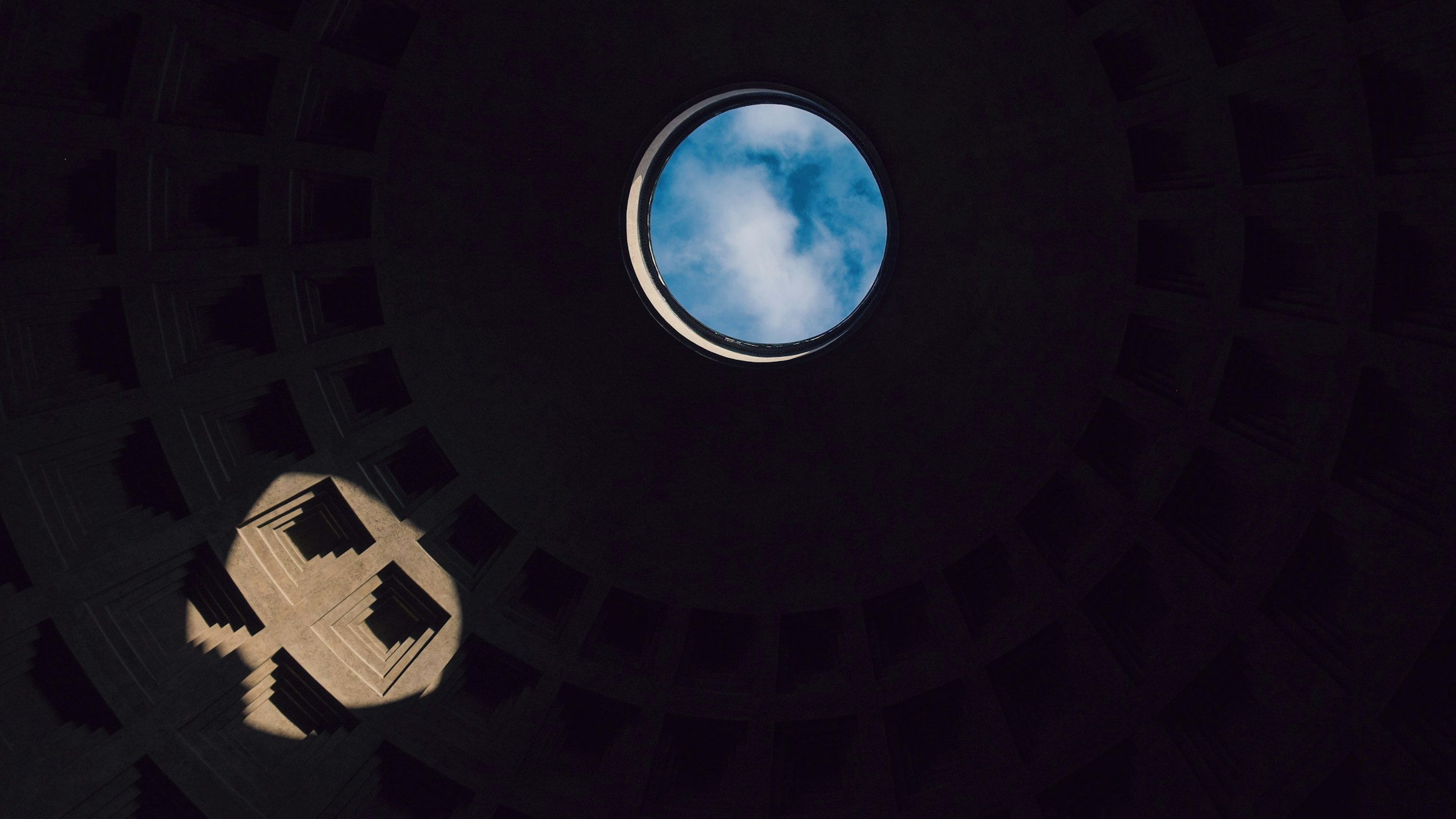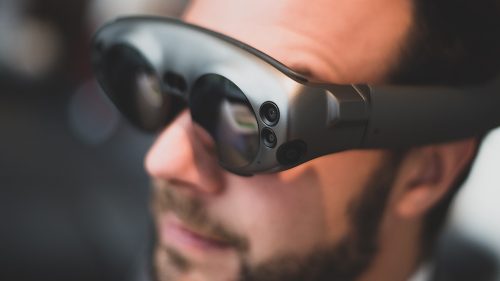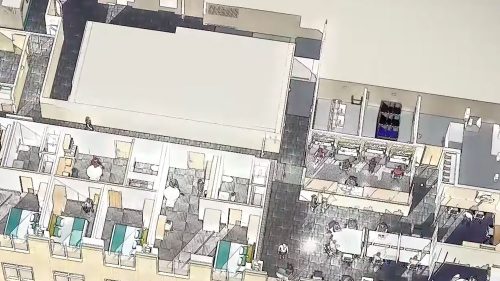By 2050, two-thirds of humanity will live in dense metropolitan areas. More cities will give way to megacities—those with over 10 million inhabitants—that in turn demand larger buildings. However, in this runaway game of expansion, our experience of urban space has become the exact opposite. Space is closing in around us.
Our cities absorb migrating populations at the expense of an integrated experience between architecture and its surroundings. Rather than give residents a meaningful sense of place, the scale of our designs isolates a significant percentage of its end users from the exterior environment and nature itself.
In fact, the most progressive building standard to date—the Living Building Challenge, under Imperative 15, Human Scale and Humane Spaces—advocates that architects return to a human scale. Rather than tailor our architecture for high density and the automobile-scale, urban planners are exhorted to decentralize structures. By clustering activities around accessible spaces that invite social interaction—the lifeblood of resilient communities—we can stop unilaterally equating optimal building design by how it handles peak loads and occupant traffic.1
Even the WELL Building Standard has weighed in on a more humane scale for commercial buildings. Under one of its seven standards—Light—WELL discusses a Right to Light (that is, access to daylight) and recommends that lease depth (the distance between the building core and the exterior façade) does not exceed 7.5 m. (25 ft.) for 75% of the area for all regularly occupied spaces2. In other words, isolated, artificial interiors no longer have a place in wellness architecture.
The Hidden Cost of Enclosed Interiors
And while these progressive parameters raise the architectural design bar going forward, the pressing issue is what to do about the older commercial buildings.
Ed Mazria, the visionary founder of Architecture 2030, states that the average global lifespan of a commercial building is 80 years. Furthermore, older buildings make up the majority of a developed nation’s floor stock and will be in use for many decades to come. The Institute for Building Efficiencycalculates that over 50% of the buildings that will still be in use by 2050 have already been built.
Meanwhile, the American Physical Society calculates new building growth rate in the United States at 1% to 2% per year, which means that even wealthy cities are many decades away from offering the already well established benefits of biophilic design to its residents.
Given such long turnover rate: how long will it be before everyone lives, works, studies, heals, and shops in newer, better-designed buildings that incorporate the basic elements of biophilic design(daylight, green spaces, and a view to nature)?
Deep plan buildings, those with over 100,000 sq. ft., ranging from urban high schools and hospitals to corporate centers and retail developments, represent a building type that casts a long shadow. And though these buildings account for just a fraction of all commercial buildings (2% in the U.S.), their impact is outsized. Out of the 5.6 million commercial buildings dotting the American landscape, deep plan buildings total over 110,000 units, but account for more than one third of the overall building floorspace3.
A quick glance at the average size of a commercial building (taking CBECS survey data from the U.S. Energy Information Administration from 1979 to 2012), shows the growing footprint that is necessary to accommodate our rising urban population. At the same time, mounting evidence has shown that isolated, artificial spaces deplete cognitive function, leading to poor productivity and hypertension, anxiety and fatigue4.
Neuroscientist Steve Rose wondered over 10 years ago if unprecedented global spike in clinical depression, which the World Health Organization has called the epidemic of the 21st century, could be linked to the rapid pace of technology and its effect on industrialized design-build architecture5.
Stephen Kellert, one of the pioneering scholars of biophilic design, was among the first to contrast the sensory-rich stimuli found in wild, undisturbed nature versus its stark absence in urban environments. In nature, our organs of perception are fully engaged while our psycho-physiology is deeply relaxed whereas industrialized design is often devoid of the sensory rhythms that our brain finds neurologically enticing.
Could the lack of a “sensory-rich” environment—the hallmark of visual access to nature—coupled with the wholesale migration to static, artificial interiors that provide little sensory stimuli be largely responsible for this dramatic change in modern humanity’s psychological well-being and neural chemistry?
Instead of living and working in natural environments, a substantial percentage of the population labors within intricate, labyrinth-like buildings in high-density metropolitan areas. Nothing could be further from our innate biophilic need for open space. And open space as humankind has experienced it, generation after generation, means a multisensory connection to open sky.
In other words, sunlight, the primordial circadian synchronizer that helps entrain or reset our circadian rhythm—along with the sky, its natural medium—is the spatial connection that artificial interiors must include, in order to give occupants an evidence-based means to recharge mental alertness and balance the emotions.
Circadian Retinal Cells & Spatial Cognition
The first step to understanding the impact of natural, open space on the physiology is to analyze how the sky affects our biology. After all, among other things, the sky is the spatial medium in which we experience the life-supporting energy of the sun.
Outside, we are exposed to much higher levels of irradiance (light intensity) than we are in any interior space. However, studies on the non-visual, biological effects of light on the physiology have led to the widespread view that circadian entrainment boils down to the quality of light itself and not the environmental context in which daylight appears.
This has led lighting designers to place great faith in the power of solid state lighting (SSL) via LEDs to modulate the intensity and color temperature of light, mimicking daylight’s sunrise-sunset cycle to help restore our circadian rhythm, indoors.
However, is it correct to reduce the circadian effects of daylight to the twin factors of light intensity and color temperature? Isn’t daylight also a spatial experience? Could the spatial aspect of daylight, which is our most visceral experience of open space, also be of equal importance?
In order to answer that, we first need a basic understanding of our circadian rhythm, the biological clocks that regulate metabolic function, including our wake/sleep cycle. Although our circadian rhythm is endogenous or self-regulating, it also depends on environmental cues to self-correct.
And the most powerful environment cue is daylight. When our eyes and brain are not exposed to enough daylight, this underexposure impairs our circadian rhythm. Given that our physiology has been exposed to outdoor living for 99.99% of our existence, the relatively new migration to enclosed interiors for the whole day is a dramatic change for our biology.
With the discovery of circadian photoreceptors, a fifth type of mammalian retinal cell that displays a peak sensitivity to blue light wavelengths, it was presumed that their primary function was limited to signaling ambient light levels (irradiance) to the brain and regulating endocrine function6. For this reason, they’re called blue sky detectors.
However, because circadian photoreceptors lack receptive fields, defined as the area or spatial domain that determines a cell’s response to external stimulus or visual input, these cells were thought to have much lower spatial resolution and were not thought to be equipped to register the spatial distribution of light. Unlike cones and rods, which are outfitted with spatial receptive fields, (a framework also known as center/surround antagonism), circadian photoreceptors were not thought to play a role in this function.
Strangely enough, the brain’s master circadian clock is able to recreate these spatial maps, even though in the circadian photoreceptors in question, mechanisms have not been found to transmit the required spatial input. However, a recent paper by Mouland et al., a team of biologists at the University of Manchester, has noted that the master circadian pacemaker in the brain—the Suprachiasmatic Nuclei or SCN—does respond to the spatial distribution of light. The authors state that “an unbiased assessment would identify spatial distribution of light as having as large an influence on SCN firing as irradiance.”7
And while this study from the University of Manchester shows that circadian entrainment remains constant in the presence of diffuse or patterned light, they also underscore that in contrast to spatial light patterns “there is no empirical evidence that diffuse light sources engage the SCN most effectively. Our data suggest that displays capable of presenting visual images (televisions, computers, etc.) to which people have an intrinsic attraction, are at least as effective at engaging the SCN.”8
Despite the new evidence, Mouland and company do not show what the function of the spatial distribution of light might be. What does the master circadian clock do with spatial data, if it does not appear to affect circadian phase resetting? (At least not to the limited set of light patterns tested thus far.)8 A However, in view of other indicators, it seems reasonable to assume that such information must play a valuable role. Perhaps future research will bear this out. After all, the sun beams daylight within the environmental context of a blue canopy that is spatial by its very nature.
Such an integrated view of our brain’s neural connections and synaptic inputs would also appear to fit well with another neuroscientist’s observations, one who notes that higher cognitive faculties like attention, memory, and planning share the same neural infrastructure (“wetware”) that our sensory and motor faculties use to navigate a shifting external environment.
Already a body of research has found that space-time interactions in human vision are asymmetrical; spatial cognition has a larger effect on temporal cognition than the other way around (Merritt et al., 2010 as cited in Homma and Ashida, 2015)9. This key insight into cognitive perception underlies why, historically, most memorable architecture evokes a sense of timelessness, one where place and its surroundings are experienced as one.
This research confirms earlier studies by environmental psychologists DeLong and Lubar (1979) who originally suggested that human beings perceive a strong relationship between the space that surrounds them and passage of time. In their research, it was shown that larger spaces slow perceived time while smaller spaces speed up perceived time10. However, it bears mentioning that this relationship also appears to oscillate in direct relation to our purpose or intent a given spatial footprint.
Perhaps these spatial/temporal dynamics explain why when place is connected to natural, open space, we experience time as abundant, we can even lose ourselves in time and wonder where it all went. On the reverse, when place is disconnected from a natural exterior, we experience time as a marker of distress. We experience it either as unbearably long (leading to boredom) or it dissipates rapidly and we feel the nagging pressure that there’s too much to do in too little time.
If we account for how our neurophysiology reacts in relation to perceived space, then we can also, to an extent, modulate the occupant’s subjective relationship to time, which in turn affects his or her productivity, social interactions, and well-being. As high-density interior spaces proliferate, architects can counter isolated, artificial environments by leveraging the restorative impact of perceived open space and thereby recreate a meaningful sense of place.
By restoring the spatial relationship to nature, we can design “transparent” interiors that reconnect the occupant to a perceived view to nature, the key biophilic element that restores the dramatic change of scale that we find most therapeutic: one where the observer experiences his/her interior space connected to and surrounded by the sky.
Environmental Design & the Mechanics of Perception
While cognition itself is a complex subject, it is enough to note that human spatial cognition is fundamental to human life. By spatial cognition Hart and Moore (1973) refer to “the internalized reflection and reconstruction of space in thought.”11
According to Jennifer Groh, Professor at the Department of Psychology and Neuroscience, and the Department of Neurobiology, at the Center for Cognitive Neuroscience at Duke University, it turns out that “not only is memory an integral part of building a sense of space, but space in turn serves as a kind of filing system for storing and accessing memories. And the brain’s memory-space connection relies on shared neural infrastructure.”12
This insight provides one of the clues that may answer the mystery behind why certain optical phenomena like biophilic illusions of nature, which provide a spatial reference frame, have such a unique impact on our psycho-physiology in comparison to standard (representational) nature art photography.
It turns out that when we provide a visual stimulus that mimics a spatial relationship we are familiar with, the brain’s sensory and motor regions react as if the original memory itself was being re-experienced. This is consistent with a unique facet of illusions; they are capable of conjuring an experience when key cognitive cues emulate a bone fide past experience.
Perceived Zenith & Perceived Horizon Line: The Restorative Barometer of Spatial Cognition
When we have our eyes open, vision accounts for two-thirds of the entire electrical activity of the brain, a full 2 billion of the 3 billion firings per second13. In fact, 50% of our neural tissue is directly or indirectly related to vision14.
In any environment—natural or artificial, exterior or interior—the zenith, the point in the celestial sphere directly above the observer, and the horizon line, the apparent junction of earth and sky, serve as environmental anchors that shape our experience of space. And when we perceive space—and hence time—as abundant, we find it easier to think and reflect, weighing matters of moral or strategic value in a clear manner. In other words, space influences the quality and depth of thought.
As a matter of fact, neuroscientists like Jennifer Groh speculate so far as to declare that abstract thought is intimately linked to spatial cognition, and the way we map out our sense of space may also be responsible for the nature of human thought itself.
These neural dynamics indicate the central role that spatial reference frames play in channeling stored (biophilic) memories of spatially similar experiences. This mechanism may explain why biophilic illusions of nature inside a building can also evoke the “Relaxation Response” that open, natural environments so easily engage.
Our spatial memory of looking up at an open sky, or into an open natural landscape, is engaged in a multisensory fashion—visually and spatially—in such a way that our organs of perception evoke the psycho-physiology of the original spatial mapping of sky or landscape.
Again quoting Dr. Groh, we discover that research confirms this understanding. “With the advent of imaging techniques to assess human brain activity, some clues to the neural basis of this kind of phenomenon have emerged. Some studies have shown that mentally picturing a visual stimulus elicits activity in the primary visual cortex and, furthermore, that the extent of this activity varies with the size of the object being imagined—tying in to the visual cortex map of space.”15
These assertions provide a neurological basis to understand why natural environments have played such a fundamental role in the development of our neural circuitry and why now, more than ever, when humankind’s daily urban experience is one of limited built space rather than interconnected open space, the negative consequences to our cognitive functions like performance and wellness cannot be stressed enough.
In the case of interior spaces, we can extend the interior zenith. Using a multisensory illusion that passes through the ceiling plane we can establish a perceived zenith beyond the ceiling. Such an illusory zenith not only provides visual information but also engages our vestibular system, thereby incorporating our sense of balance and spatial orientation to reinforce the new spatial reference frame. A multisensory approach to image composition, among other elements of design, is fundamental to creating a maximally successful biophilic illusion.
The combined environmental cues tie the overhead image to its architectural context, thereby making the boundaries of the ceiling “transparent” to the eye and awareness of the observer. The suggestive quality of the environmental cues, image composition and light quality married to architectural context, can similarly “weaken” the boundaries of interior walls, leading to a transparent connection between interior and perceived exterior.
These two spatial relationships, perceived zenith and perceived horizon line, represent a visual and cognitive technology that has just begun to be leveraged in deep plan interiors. It is particularly useful when other avenues to bring biophilic design relief indoors are not structurally possible or economically feasible. By taking this cognitive framework into account in the visual design process, it is possible to have a research-based visual technology that can turn billions of square feet of enclosed interiors into comfortable, healthy, and restorative indoor spaces for long-term human occupancy.
In order to design conscious cities, we must understand how the brain modulates our sense of time in relation to place, and how awareness of self deepens in direct relation to the nature-like quality of our surroundings. And as building design transitions from an object-driven to an experience-oriented model, we can unlock the restorative powers of perceived open space to reverse the rise of compressed urban footprints.
References
1 International Living Future Institute. 2016. Living Building Challenge 3.1. Human Scale and Humane Places. Imperative 15, p. 53. Retrieved on March 26, 2017 from https://living-future.org/product/lbc-3-1-standard/
2 Delos Living LLC. 2014. WELL Building Standard (version 1.0). Standard: Light, Section 61, Right to Light, p. 101. Retrieved on April 8, 2015 from http://www.wellcertified.com/well
3 U.S. Energy Information Administration, 2012. Commercial Buildings Energy Consumption Survey (CBECS), p. 1-2. Retrieved on July 8, 2017 from https://www.eia.gov/consumption/commercial/reports/2012/buildstock/
4 Terrapin Bright Green, LLC, 2012. The Economics of Biophilia, Why Designing with Nature in Mind Makes Financial Sense. Linking Desire for Nature with Dollars, p. 11. Retrieved May 16, 2013 from http://www.terrapinbrightgreen.com/reports/the-economics-of-biophilia/
5 Rose, Steve. The Future of the Brain, The Promise and the Perils of Tomorrow’s Neuroscience. New York, Oxford University Press, 2005.
6 Graham, D. M. and Kwoon Y. Wong. “Melanopsin-expressing, Intrinsically Photosensitive Retinal Ganglion Cells (ipRGCs).” Webvision (August 2015). Retrieved Dec. 14, 2015, from the Introduction in: http://webvision.med.utah.edu/book/part-ii-anatomy-and-physiology-of-the-retina/melanopsin-expressing-intrinsically-photosensitive-retinal-ganglion-cells/
7 Mouland et al., Responses to Spatial Contrast in the Mouse Suprachiasmatic Nuclei, Current Biology (2017), http://dx.doi.org/10.1016/j.cub.2017.04.039 p.6
8 Mouland et al. Ibid. 8A Robert J. Lucas, Lead Contact, Faculty of Biology, Medicine and Health, University of Manchester (personal communication, August 23, 2017).
9 Homma, C. T., and Hiroshi Ashida (2015). What makes space-time interactions in human vision asymmetrical? Frontiers in Psychology, Vol. 6, article 756, Retrieved December 9, 2015 from http://journal.frontiersin.org/article/10.3389/fpsyg.2015.00756/full
10 DeLong, A. J., and J. F. Lubar. 1979. Effect of Environmental Scale of Subjects on Spectral EEG Output. Society for Neuroscience Abstracts 5:203. In Biophilic Design: The Theory, Science, and Practice of Bringing Buildings to Life. Kellert, Stephen, Judith Heerwagen, and Matin Mador, eds. Wiley & Sons, NJ, 2008. P. 309.
11 Mark, D.M., 1993. “Human spatial cognition.” In Medyckyj-Scott, D., and Hearnshaw, H. M., editors, Human Factors in Geographical Information Systems, Belhaven Press, p. 51-60.
12 Jennifer M. Groh, 2014. Making Space, How the Brain Knows Where Things Are. Cambridge, Massachusetts. The Belknap Press of Harvard University Press, Ch. 9, p.189.
13 Jensen, Eric. (2008). Brain-Based Learning: The New Paradigm of Teaching, as cited in True or False? Vision Rules the Brain.Retrieved on October 22, 2015 from http://www.imagethink.net/imagethink-2/true-or-false-vision-rules-the-brain/
14 Ibid.
15 Jennifer M. Groh. Ibid. p. 207.








